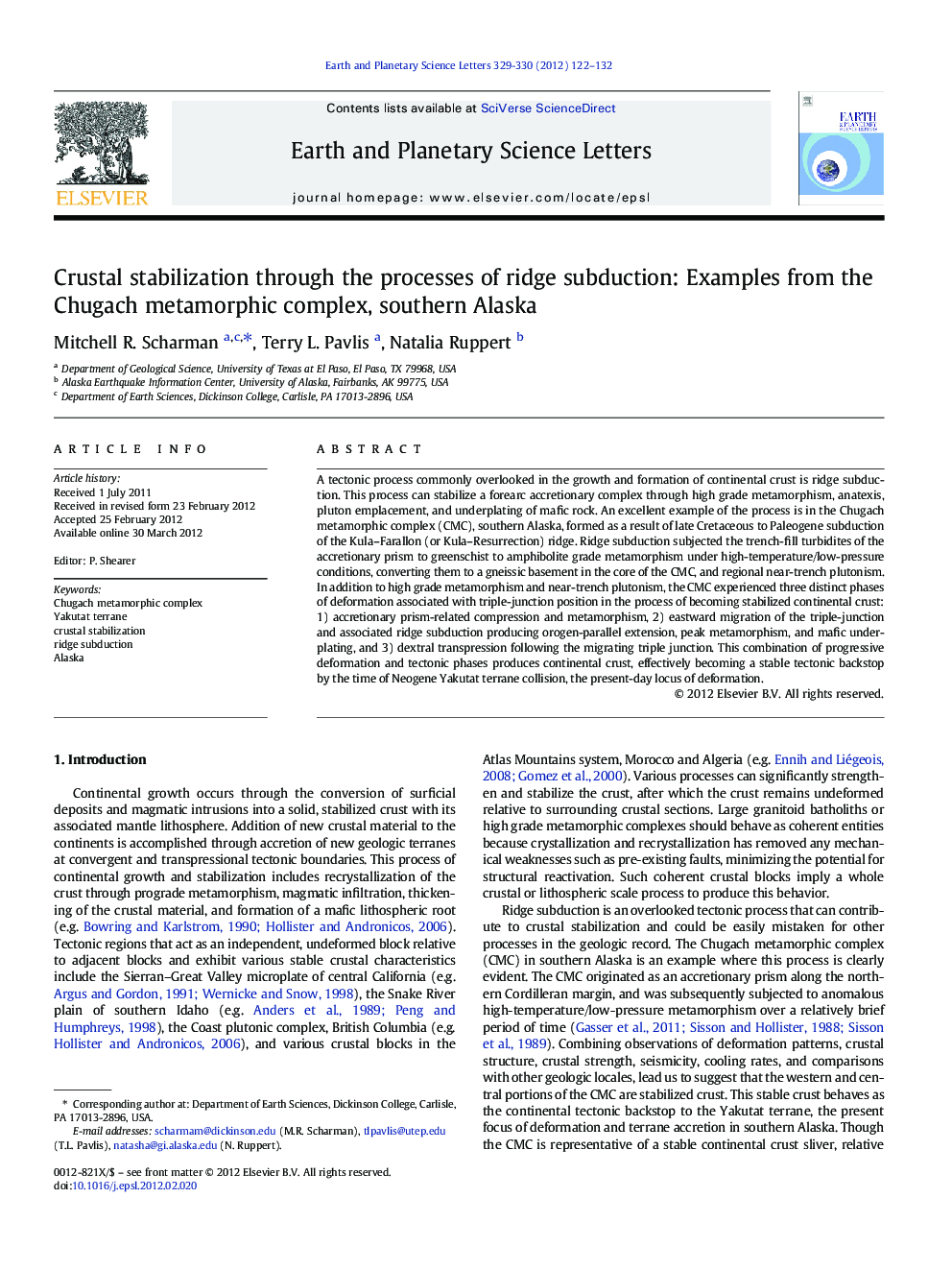| کد مقاله | کد نشریه | سال انتشار | مقاله انگلیسی | نسخه تمام متن |
|---|---|---|---|---|
| 4677541 | 1634806 | 2012 | 11 صفحه PDF | دانلود رایگان |

A tectonic process commonly overlooked in the growth and formation of continental crust is ridge subduction. This process can stabilize a forearc accretionary complex through high grade metamorphism, anatexis, pluton emplacement, and underplating of mafic rock. An excellent example of the process is in the Chugach metamorphic complex (CMC), southern Alaska, formed as a result of late Cretaceous to Paleogene subduction of the Kula–Farallon (or Kula–Resurrection) ridge. Ridge subduction subjected the trench-fill turbidites of the accretionary prism to greenschist to amphibolite grade metamorphism under high-temperature/low-pressure conditions, converting them to a gneissic basement in the core of the CMC, and regional near-trench plutonism. In addition to high grade metamorphism and near-trench plutonism, the CMC experienced three distinct phases of deformation associated with triple-junction position in the process of becoming stabilized continental crust: 1) accretionary prism-related compression and metamorphism, 2) eastward migration of the triple-junction and associated ridge subduction producing orogen-parallel extension, peak metamorphism, and mafic underplating, and 3) dextral transpression following the migrating triple junction. This combination of progressive deformation and tectonic phases produces continental crust, effectively becoming a stable tectonic backstop by the time of Neogene Yakutat terrane collision, the present-day locus of deformation.
► Chugach metamorphic complex stable crust was produced by a ridge subduction event.
► A combination of tectonic and deformation progression produces stable crust.
► A thick mafic root produced by ridge subduction increases the crustal strength.
► This stable crust is similar to other regions of stable North American Cordillera.
► This becomes a stable tectonic backstop prior to Neogene Yakutat terrane collision.
Journal: Earth and Planetary Science Letters - Volumes 329–330, 1 May 2012, Pages 122–132